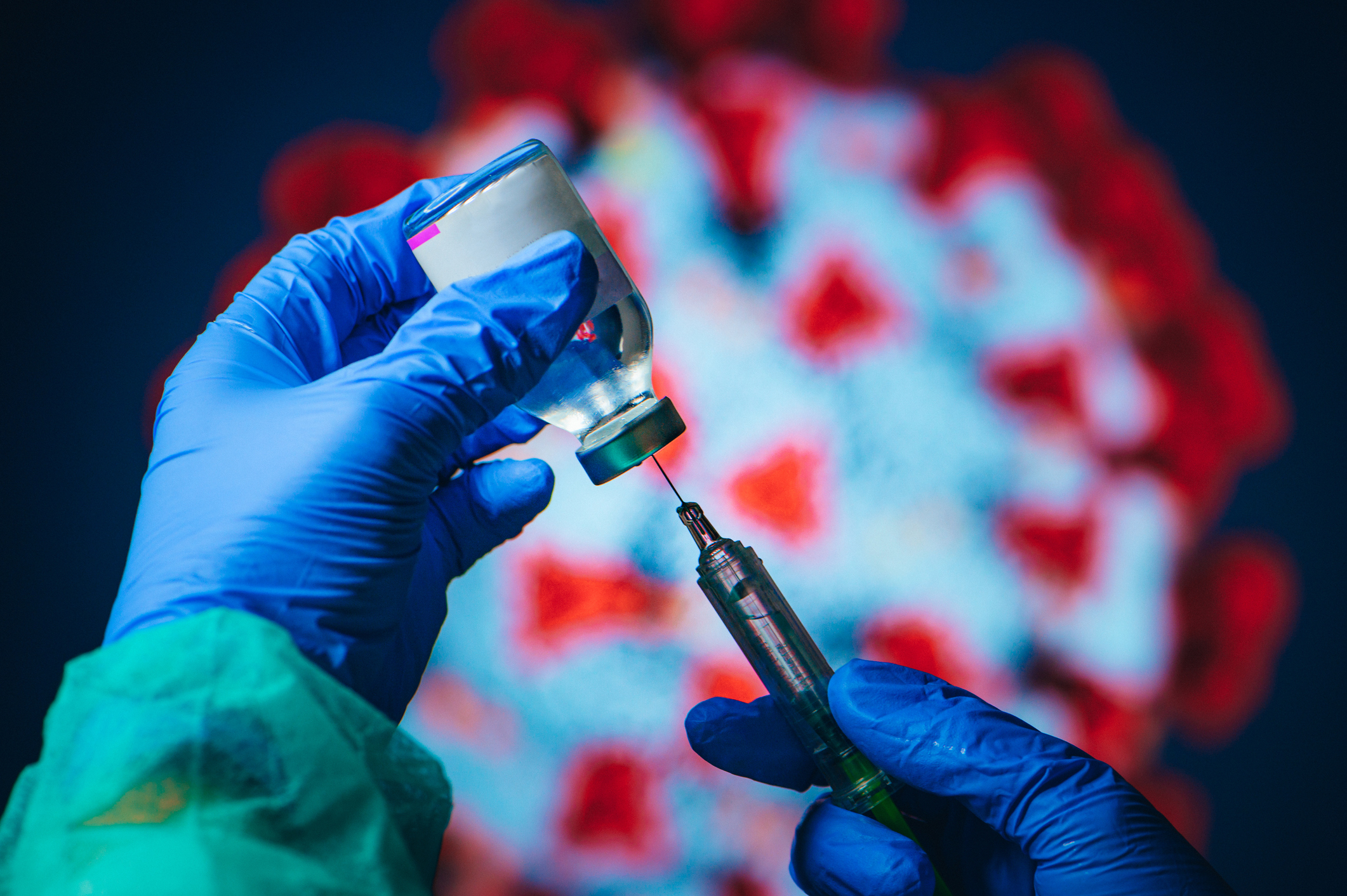The vaccine breakthrough
Pfizer and Moderna may soon begin emergency distribution of coronavirus vaccines created with genetic technology

Pfizer and Moderna may soon begin emergency distribution of coronavirus vaccines created with genetic technology. Here's everything you need to know:
How do these vaccines work?
Up to now, vaccines have introduced the immune system to a benign version of a virus or bacteria, priming it to recognize and fight the real pathogen if and when it strikes. Vaccines for measles, polio, the flu, and other infectious diseases use parts of or entire viruses that have been weakened or inactivated. The Pfizer and Moderna vaccines are based on a novel approach. They rely on a snippet of genetic material called messenger RNA, or mRNA, that is encased in a tiny, protective bubble of fat. Messenger RNA, sometimes called "the software of life," is usually made by DNA to carry instructions to other parts of the cell to make proteins. The vaccine makers constructed this specific form of RNA using the genetic sequence for the coronavirus, which was decoded back in January. That's how they were able to create a viable vaccine with a speed that shattered the previous record of about four years. Moderna went from obtaining the genetic sequence to inoculating the first test subject in just 63 days.
The Week
Escape your echo chamber. Get the facts behind the news, plus analysis from multiple perspectives.

Sign up for The Week's Free Newsletters
From our morning news briefing to a weekly Good News Newsletter, get the best of The Week delivered directly to your inbox.
From our morning news briefing to a weekly Good News Newsletter, get the best of The Week delivered directly to your inbox.
What does messenger RNA do?
When the coronavirus attacks, it hijacks the machinery of our body's cells and instructs them to crank out more virus, generating a cascading assault. The vaccines take advantage of this process by injecting mRNA into muscle cells in the upper arm, which are instructed to manufacture just a piece of the coronavirus — the outside spike proteins, which the virus uses to latch onto cells. On their own, the spike proteins are harmless, but they trigger the immune system and train it to quickly react to — and beat back — the actual coronavirus. "It's 21st-century science," said William Schaffner, professor of preventive medicine at Vanderbilt University School of Medicine.
How well do these vaccines work?
Phenomenally well, so far. The benchmark for FDA approval is an efficacy rate of 50 percent, roughly the average of what flu vaccines achieve. Early results for the Pfizer and Moderna vaccines show about 95 percent efficacy, including for those over 65 — a game-changing result. "It makes it now clear that vaccines will be our way out of this pandemic," says Kanta Subbarao, an infectious-disease expert at the University of Melbourne. The numbers were revealed in an "interim analysis" of late-stage studies that are still underway. In the studies, Moderna and Pfizer both injected tens of thousands of volunteers with either the vaccine or a placebo — then waited to see who got COVID through their real-world activities. In Pfizer's study, out of 170 who fell ill, only eight had received the vaccine; Moderna's numbers were similar. Moderna said vaccinated patients who did get COVID had mild cases, and both vaccines produced both neutralizing antibodies and T-cells — the one-two punch of the immune system. Based on those results, the FDA is expected to give the two vaccines emergency-use authorization.
A free daily email with the biggest news stories of the day – and the best features from TheWeek.com
Are there any drawbacks?
The downside of messenger RNA is its fragility, which leads to significant practical hurdles. To keep from degrading, Pfizer's vaccine must be stored at minus 94 degrees Fahrenheit, roughly the winter temperature of the South Pole. "That's a tremendous logistical issue," said Gregory Poland, a vaccine researcher at the Mayo Clinic. Pfizer has devised suitcase-size shipping boxes that can keep vials sufficiently cold for up to 10 days using dry ice. But the temperature requirement is likely to limit that vaccine's distribution to urban hubs. Moderna's vaccine, however, can be stored in normal medical refrigerators. Both vaccines require two inoculations several weeks apart. Persuading hundreds of millions of Americans to return at the right interval adds another complication to an already daunting undertaking.
What about safety?
So far, the only side effects that have been reported by some recipients are fatigue, fever, joint pain, headaches, and soreness in the injection site lasting a day or two. Close monitoring of the study subjects will continue, but adverse vaccine effects typically surface early. Still, when tens of millions of people get the vaccines, "you can never rule out that there won't be someone out there who might respond in an abnormal way," said Robin Shattock, an immunology expert at Imperial College London.
When can I get one?
Both companies have manufactured tens of millions of doses and are ready to hit the ground running when approval is granted. Still, mass inoculation will take at least four to six months. It's "the largest, most complex vaccination program ever attempted," said Kelly Moore of the Immunization Action Coalition. Health-care workers will be first in line, and are likely to exhaust the 45 million doses (enough for 22.5 million people) that will be available in December and perhaps January. After that, priority is likely to be given to the elderly, essential workers such as police officers and firefighters, and those with underlying medical conditions. For the general population, experts say, we're looking at spring or early summer.
The enormous promise of mRNA
The excitement over mRNA vaccines' early success extends well beyond what it means for the coronavirus pandemic. The trial data offer the first solid evidence for a technology whose potential has excited researchers for years, and hold out great promise for the fight against other diseases. Experts say genetic technology could improve vaccines for the flu and other infectious diseases. It has the potential to create a new category of medicines, opening the door to treatments for heart disease, cancer, and autoimmune diseases. Moderna is currently testing the viability of an mRNA-based cancer therapy that's customized for each patient based on the mutations found in their tumor cells, and BioNTech, Pfizer's German partner, is working on vaccines to treat breast, skin, and pancreatic cancer. With a platform now in place, the mRNA coronavirus vaccines also offer a model for creating vaccines for future pandemics at previously unimaginable speed — weeks or months instead of years. "'Historic' isn't even the right word," says Larry Corey, a virologist at the Fred Hutchinson Cancer Center in Seattle. "It's just an amazing accomplishment of science."
This article was first published in the latest issue of The Week magazine. If you want to read more like it, you can try six risk-free issues of the magazine here.
-
 The history of US nuclear weapons on UK soil
The history of US nuclear weapons on UK soilThe Explainer Arrangement has led to protests and dangerous mishaps
-
 Tea with Judi Dench: ‘touching’ show is must-watch Christmas TV
Tea with Judi Dench: ‘touching’ show is must-watch Christmas TVThe Week Recommends The national treasure sits down with Kenneth Branagh at her country home for a heartwarming ‘natter’
-
 Codeword: December 24, 2025
Codeword: December 24, 2025The daily codeword puzzle from The Week